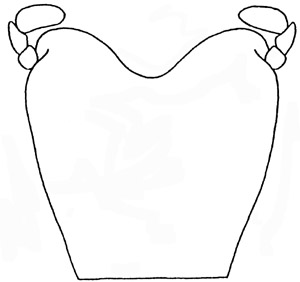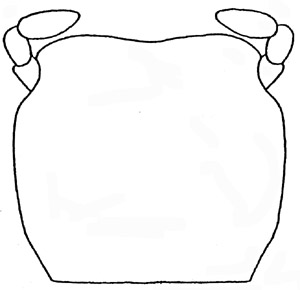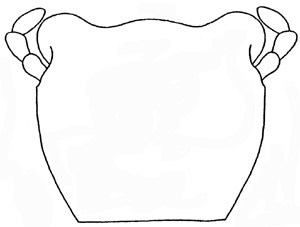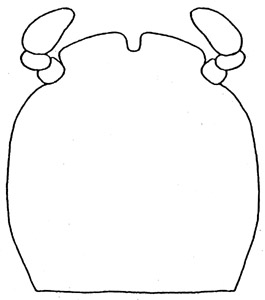| 1. . . |
Apex of metatibia
with more than 10 spinules. Mandibles entirely rounded, not sickle-shaped. North America to South America |
|
| 1'. |
Apex of metatibia with fewer than 10 spinules. Mandibles sickle-shaped. Africa | . Xenoproctis |
| 2(1).
|
Antenna 10-segmented | |
| 2'. |
Antenna 8- or 9-segmented | |
| 3(2). . |
Mesosternum with keel extending anteriorly beyond mesocoxae | . 4 |
| 3'. |
Mesosternum without keel extending anteriorly beyond mesocoxae | . 5 |
| 4(3). . |
Clypeus in ventral view extending past labrum; weakly trilobed apically in male, rounded apically in female | |
| 4'. |
Clypeus in ventral view not extending past labrum, rounded apically in male and female | . Areoda |
| 5(4).
|
Antenna with club twice as long as segments 2-7 combined | Byrsopolis |
| 5'. |
Antenna with club shorter than or subequal to segments 2-7 combined | . 6 |
| 6(5). . |
Terminal segment of maxillary palpus as long or longer than antennal club | |
| 6'. |
Terminal segment of maxillary palpus shorter than antennal club (nearly as long as antennal club in Cotalpa consobrina) | . 7 |
| 7(6).
|
Apex of mentum sinuate or bisinuate or emarginate (Figs. 1-3) | |||||||||||||
| 7'. |
Apex of mentum notched (Fig. 4) | |||||||||||||
|
||||||||||||||
| 8(7). . . |
Pronotum glabrous. Clypeus subrectangular, angles narrowly rounded. Large claw of at least metatarsus cleft in males; all claws simple in females | |
| 8'. |
Pronotum
setose, at least in places. Clypeus semicircular (widest at base), angles broadly rounded (P. deserta with subrectangular clypeus). Claws simple in males and females |
|
| 9(7). . . |
Males metallic green; females metallic green, dark brown, or black. Parameres rounded apically. Central Mexico to Honduras | |
| 9'. |
Males
and females reddish-brown, brown, or black. Parameres truncate apically. Southern Arizona to central Mexico |
|



